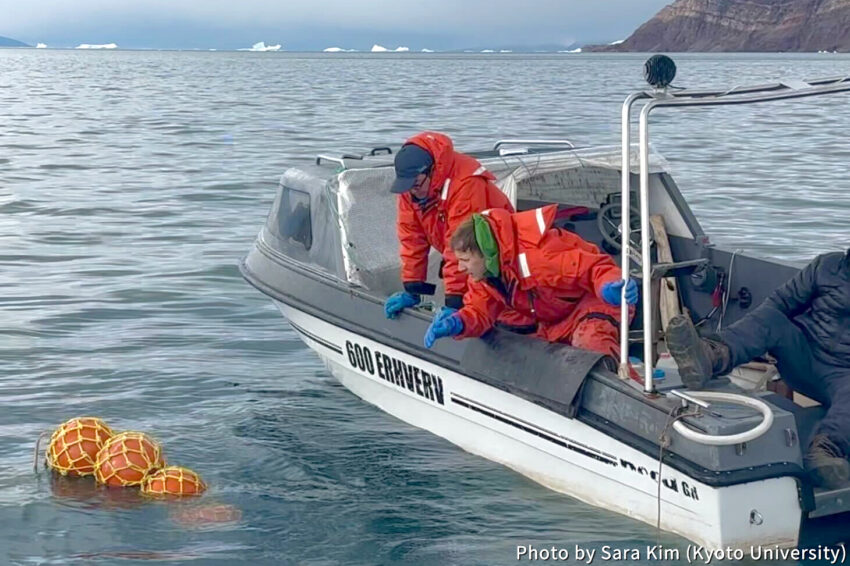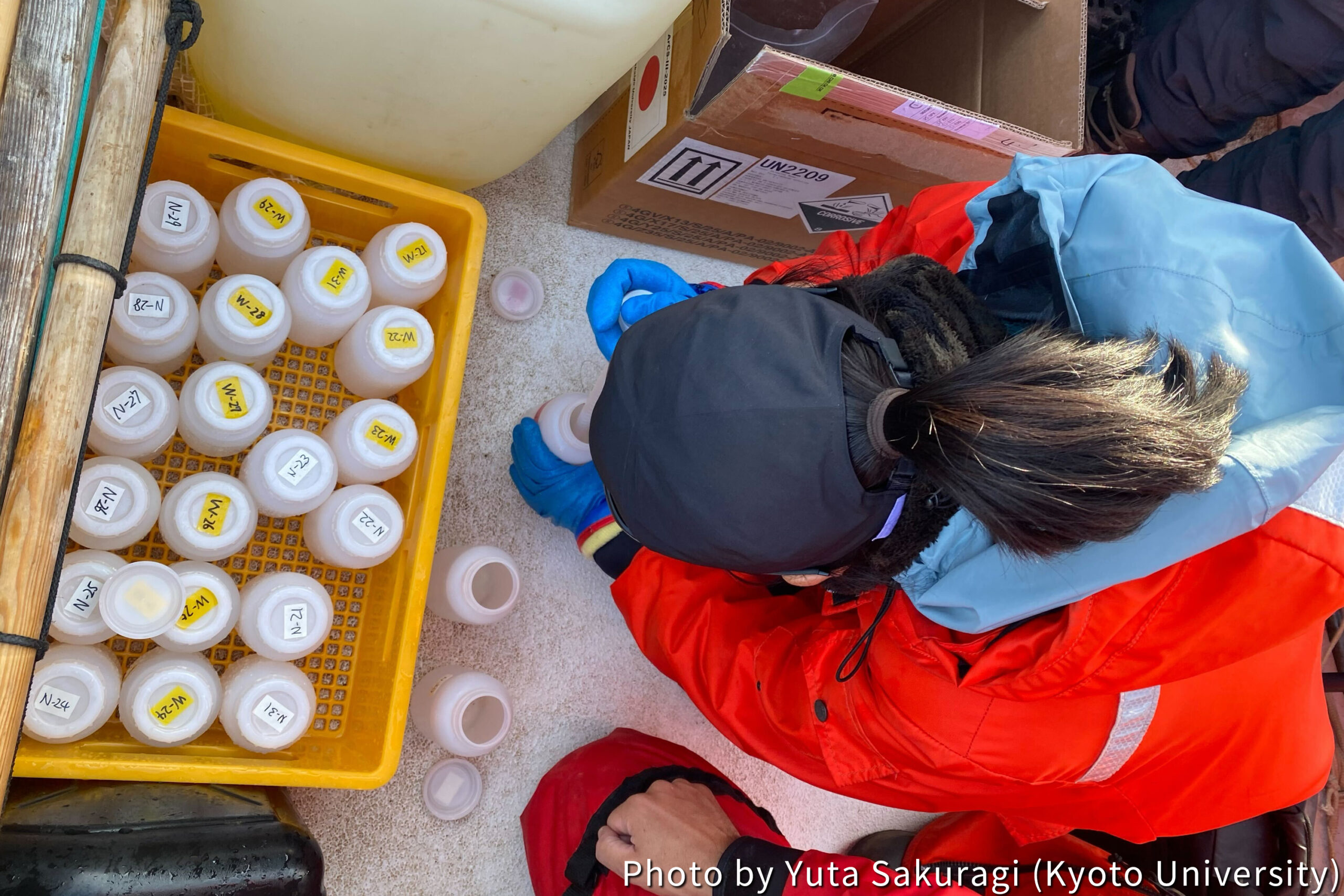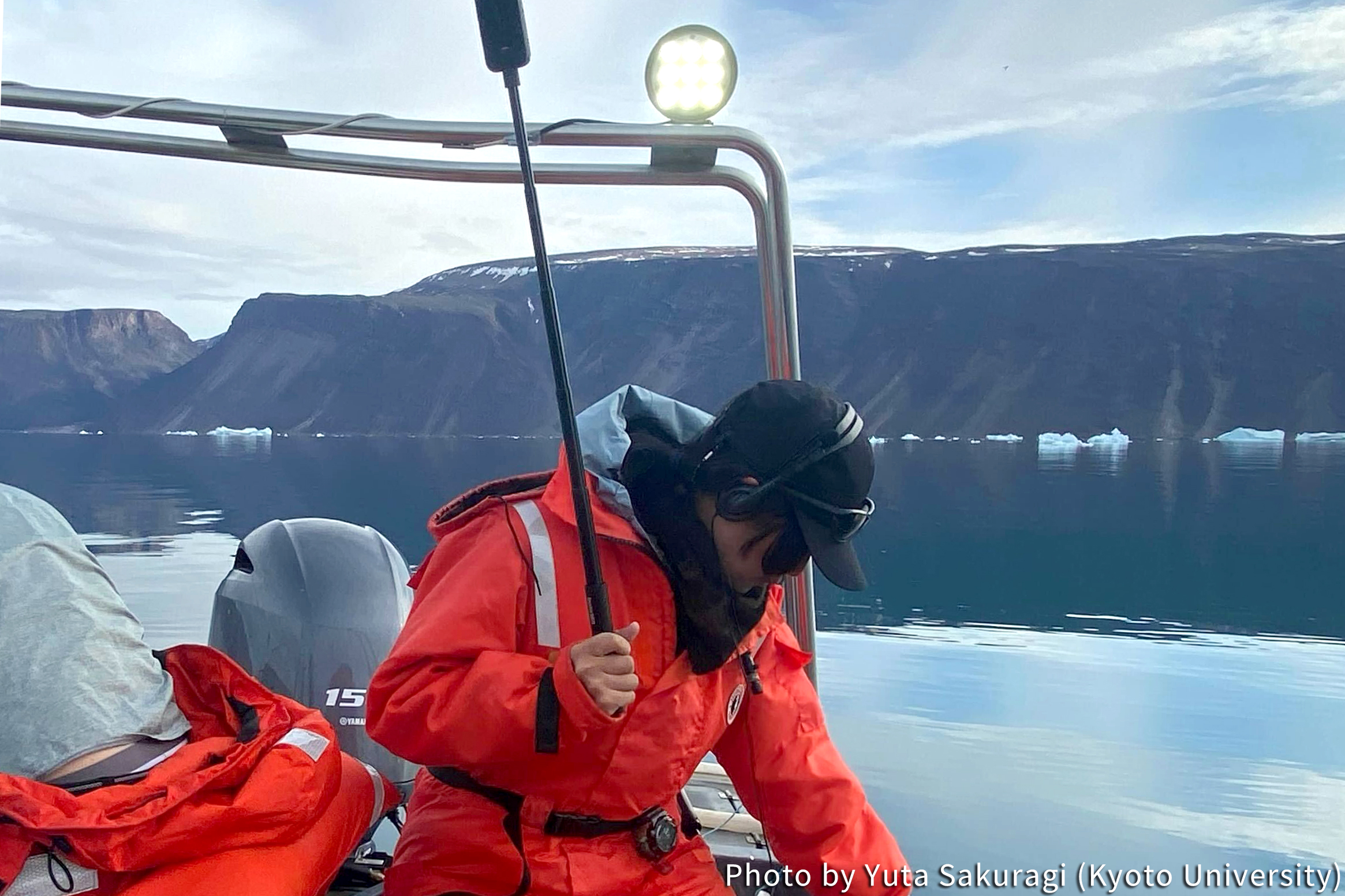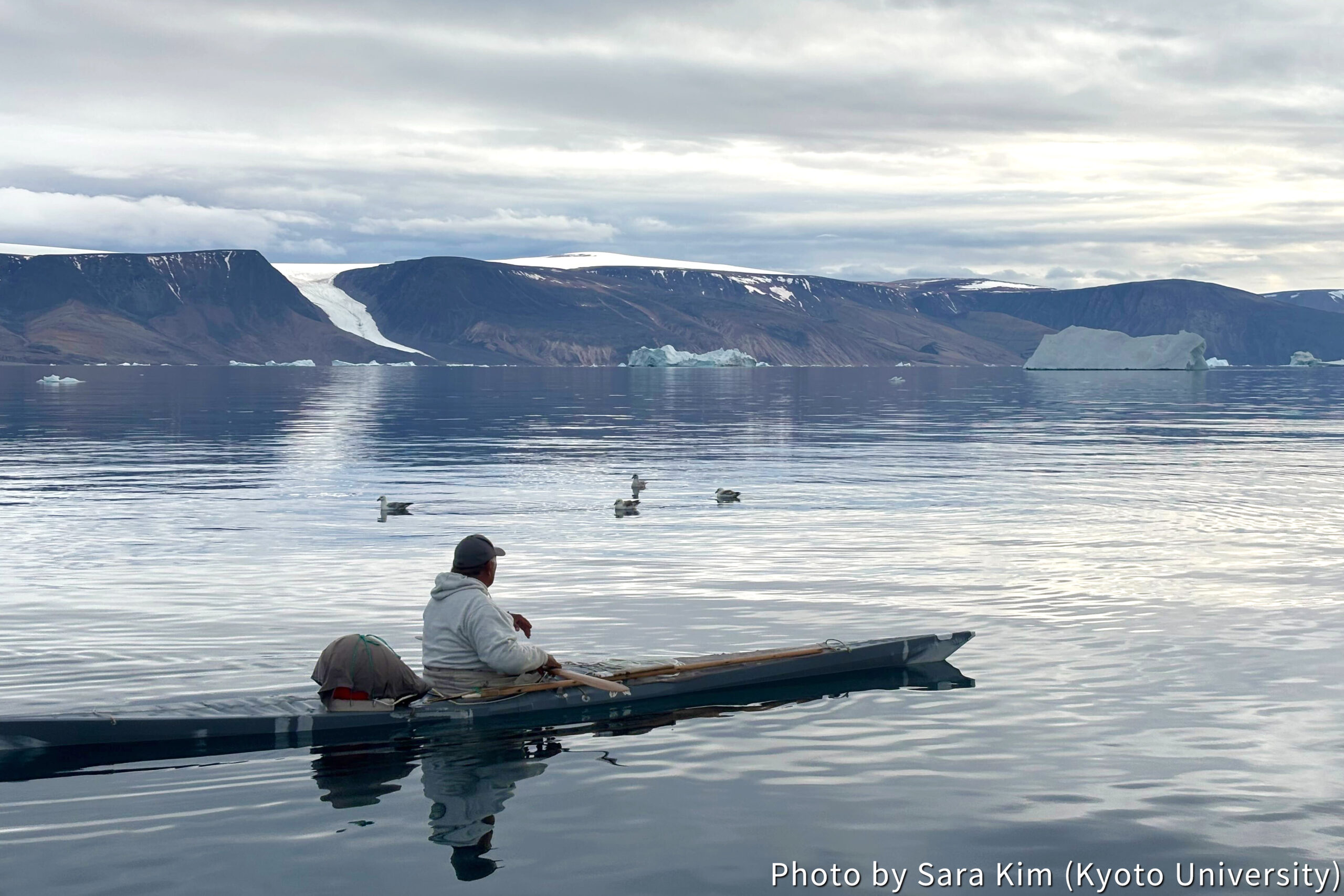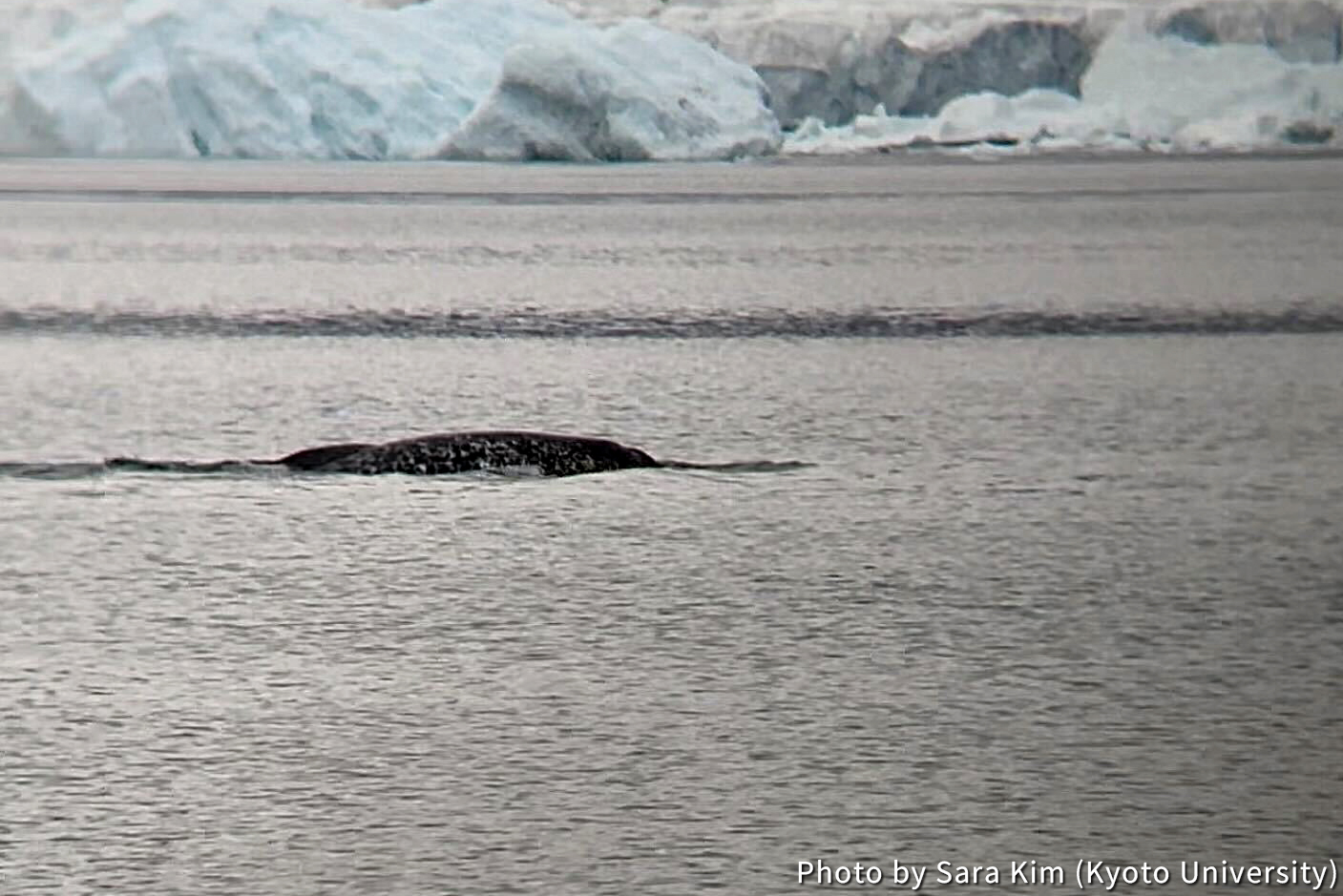Release date
Recovery and Deployment of Hydrophones and Visual Surveys of Marine Mammals in Northwestern Greenland
Post Date:
Author: Sara Kim (First-year Master’s Student, Graduate School of Science, Kyoto University)
With support from the ArCS III Overseas Fellowship Program, I stayed in Qaanaaq village in northwestern Greenland and conducted field surveys, including pickup and redeployment of moored hydrophones, oceanographic surveys, visual surveys of marine mammals, and underwater acoustic recordings during narwhal hunts.
Climate change is driving rapid melting of glaciers and ice sheets in Greenland, raising concerns about changes to the marine ecosystem. To evaluate these ecological impacts, it is important to clarify relationships between the marine environment and top predators such as marine mammals. Narwhals (Monodon monoceros), use high-frequency vocalizations for foraging and social behaviors. However, underwater sounds generated by increased vessel activity during longer ice-free periods and by iceberg calving may overlap with the frequency bands used in narwhal vocalizations, potentially masking communication and affecting their behavior. In addition, recent years have seen increasing occurrences of other marine mammals, such as killer whales, in this region, reflecting ecosystem changes associated with climate warming.
To address these issues, we have been conducting passive acoustic monitoring (PAM) around Qaanaaq since 2019. PAM deploys moored hydrophones to record marine mammal vocalizations, iceberg calving sounds, and vessel noise continuously over extended periods, enabling unattended long-term data collection without the need for continuous on-site human presence. In this survey, we retrieved the hydrophones that had been deployed the previous year, extracted the hydroacoustic data, carried out equipment maintenance and replacement, and then redeployed the instruments at the same locations (Photo 1).
For the oceanographic survey, we measured water temperature, salinity, and turbidity, and collected plankton samples. I also recorded underwater sounds using a hydrophone from the vessel at several stations in the fjord (Photos 2, 3).
In addition, I joined local hunters on three narwhal hunts, observed traditional hunting methods, and conducted visual surveys and underwater acoustic recordings (Photos 4, 5). During the first hunt, we observed over 100 narwhals across several hours and recorded numerous and varied vocalizations.
Going forward, I will focus analyses on the long-term PAM dataset (since 2019), integrating the recently recovered recordings, ship-based surface recordings, and field observation notes to examine marine mammal vocal activity and the underwater acoustic characteristics of their habitats.
Finally, I would like to express my sincere gratitude to all members of the ArCS III project for their generous support during this dispatch.


